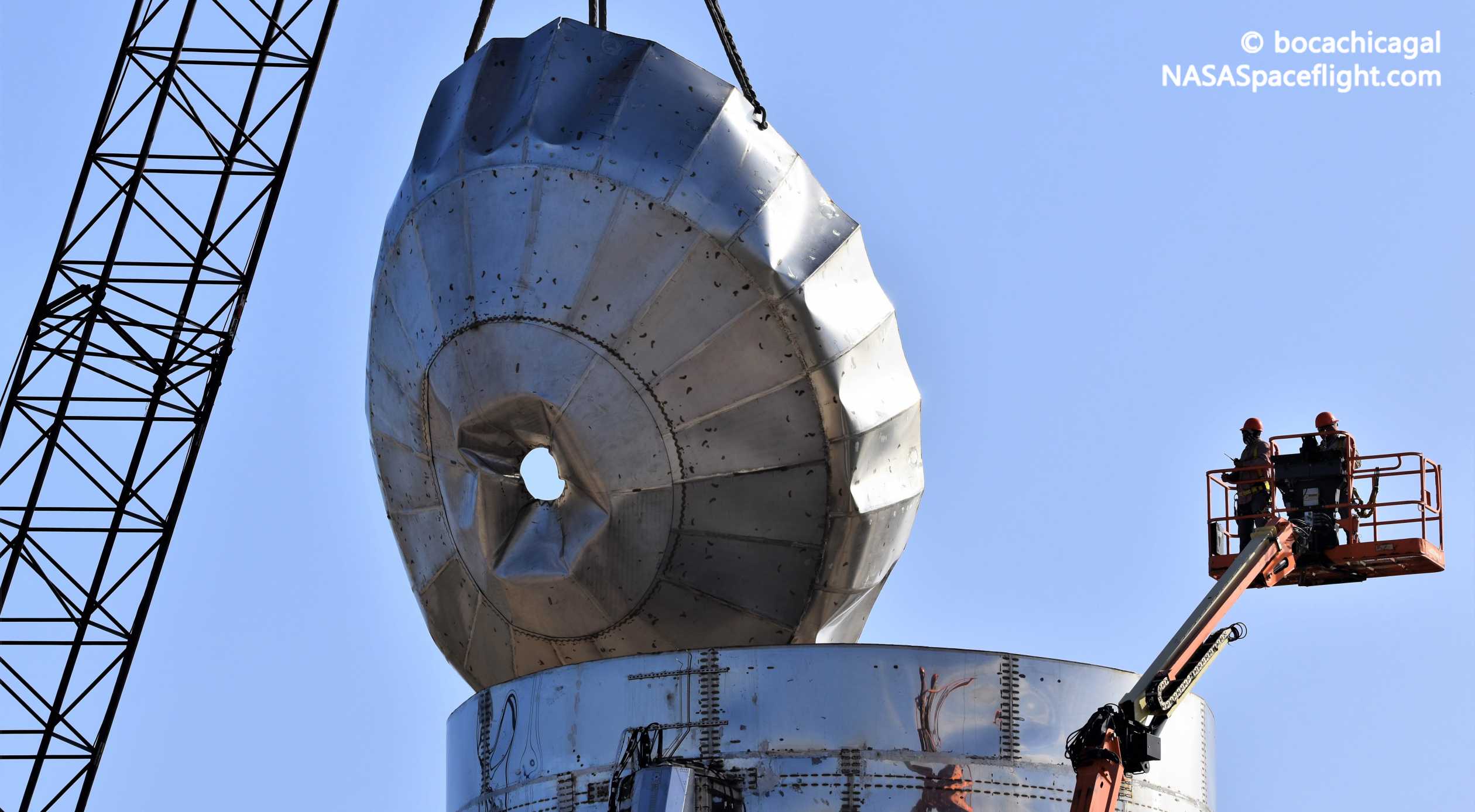

News
SpaceX scraps first Starship prototype to make way for new and improved rockets
A bit less than a month after SpaceX’s first full-scale Starship prototype was partially destroyed during testing, the damaged rocket has been almost completely scrapped to make way for new and improved Starships.
On November 20th, SpaceX effectively tested the Starship Mk1 – the first full-scale prototype – to destruction, pressurizing the rocket’s tank section (lower half) until it quite literally popped its top. The pressure wave that failure created damaged almost every internal component of the massive vehicle, all but guaranteeing that SpaceX would have to scrap the vehicle and move on to new prototypes.
Those future prototypes will take advantage of the many, many lessons learned from Starhopper’s two test flights and several additional grounded tests, as well as the many learning experiences presented through Starship Mk1’s pathfinder manufacturing, assembly, and test campaign. As is SpaceX’s signature, the company is choosing to learn by building actual hardware and making the inevitable mistakes that come hand in hand with such an eccentric and ambitious program.
Above all else, SpaceX is trying to redefine the minimum infrastructure needed to build high-performance launch vehicles at a scale comparable to or even larger than NASA’s Saturn V, the largest rocket ever successfully launched. Modern rockets like Falcon 9 and Atlas V are built in relatively clean and environmentally-controlled environments and Saturn I and V – while quite a bit less sterile – were at least built inside large hangar-like facilities.
With Starship, SpaceX instead wants to build rockets even larger than Saturn V out in the elements and with a far more common (and thus affordable) workforce, (theoretically) made possible in large part thanks to its extensive use of stainless steel. Case in point, Starhopper – a low-fidelity Starship test bed – was quite literally welded together on the South Texas coast by welders far more familiar with building water towers. While not without its teething pains, Starhopper proved to be incredibly sturdy and resistant to anomalous behavior and successfully performed two separate flight tests in July and August 2019.
Three months after Starhopper’s second and final hop test, SpaceX’s Starship Mk1 tank section – the lower half of the rocket – was moved to the launch site and began a series of tanking tests. The first few tests were completed successfully and focused on searching for leaks with a neutral cryogenic liquid (likely liquid nitrogen). After the majority of those leaks were sealed, SpaceX moved into liquid oxygen load testing a few days later. For unconfirmed reasons, it turned out that that first liquid oxygen pressure test would also be Starship Mk1’s last.
On November 20th, SpaceX pressurized Starship Mk1 to its limits, with almost all of the visible creases and wrinkles in its steel surface visibly smoothing out as the supercool liquid oxygen caused frost to form on the exterior. Ultimately, SpaceX pushed the vehicle beyond its limits and its uppermost tank dome quite literally popped off of Starship’s tank section, whether the overpressure event was intentional or unexpected. The force of that overpressure event essentially sent a shockwave through Starship, crushing and warping its two remaining tank domes and transfer tubes like an aluminum soda can.
In simpler terms, very few parts of Starship Mk1 escaped unharmed, all but guaranteeing that it would not be worth the effort to repair it. Instead, SpaceX has almost entirely scrapped the prototype over a period of two weeks. According to an official statement released shortly after Mk1’s failure, SpaceX will attempt to recover and reuse as much of Mk1 as it can and those few salvageable parts will be added to an entirely new prototype, deemed Starship Mk3.
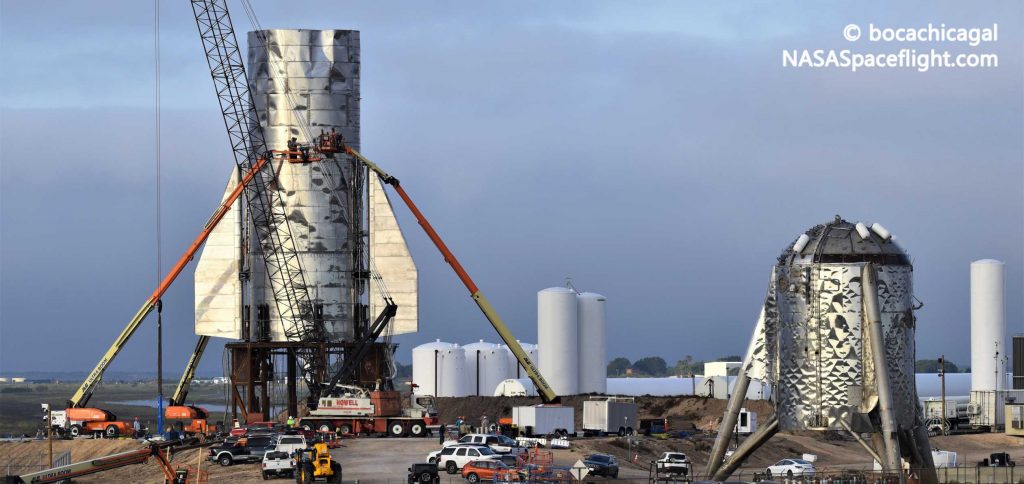
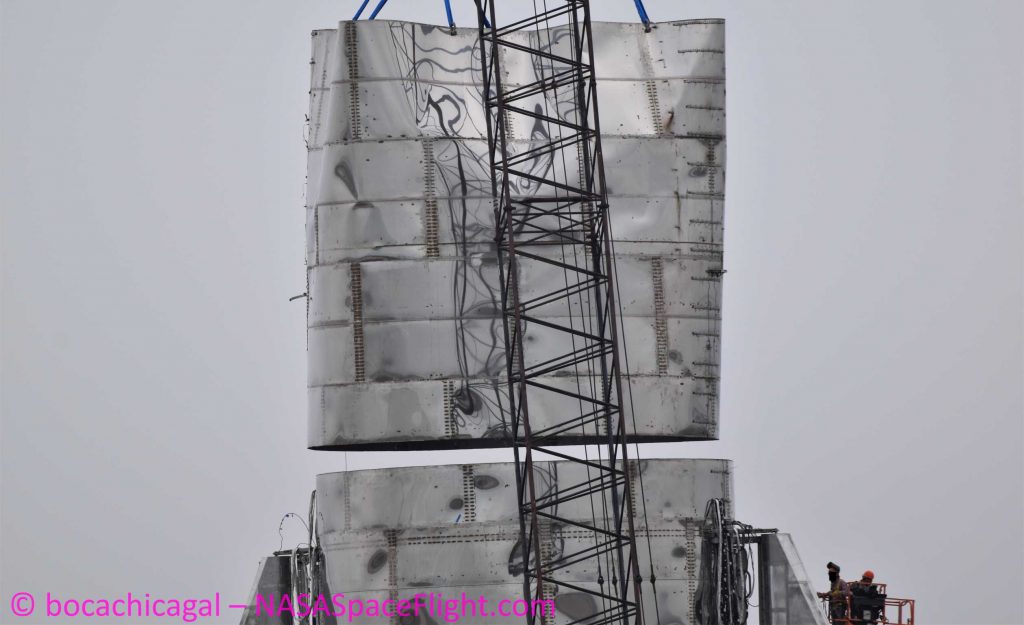
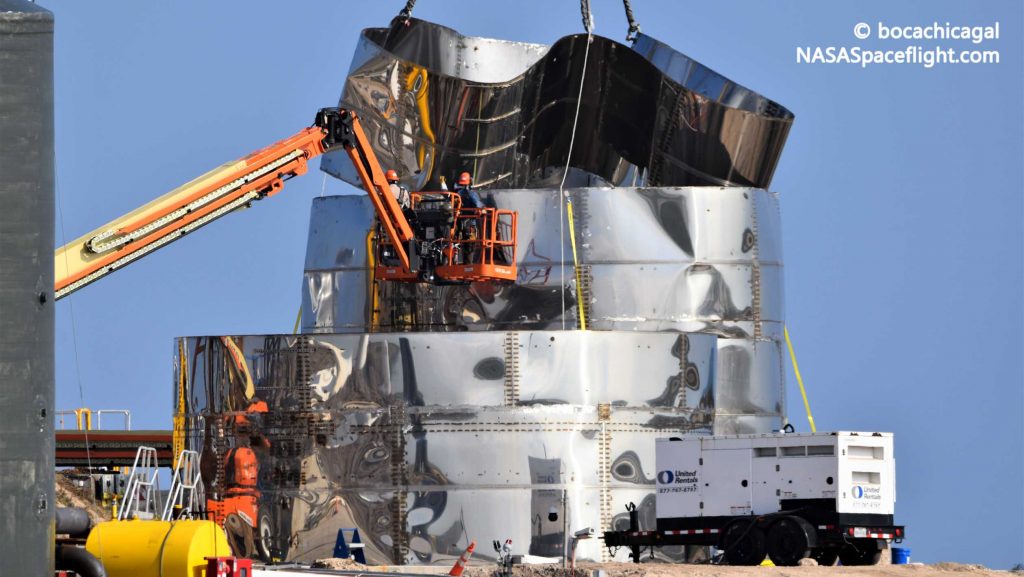
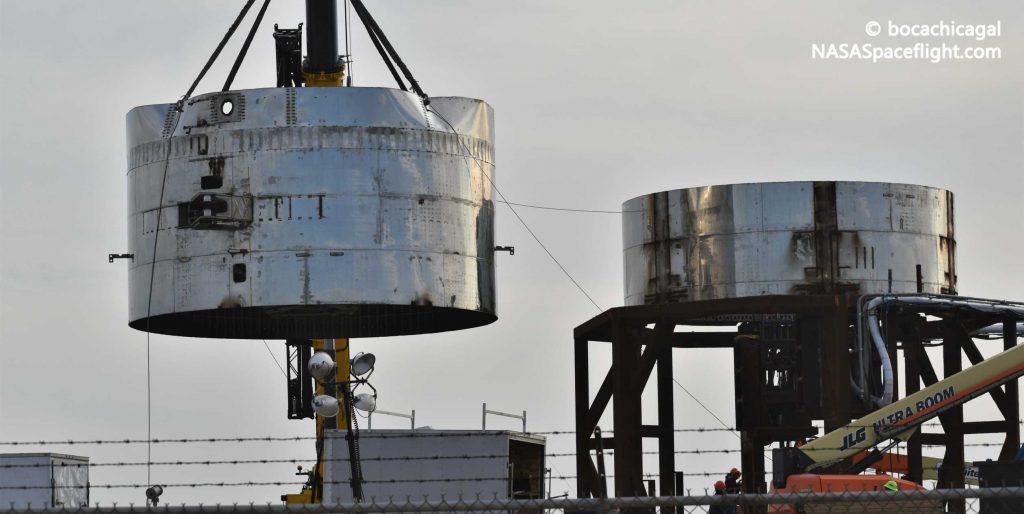
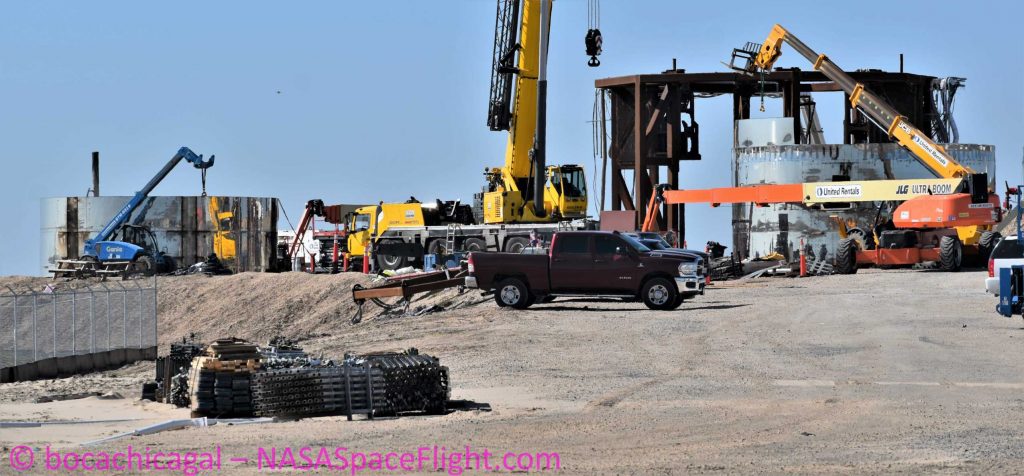
Although it’s disappointing that Starship Mk1 was unable to perform any kind of Raptor engine testing, let alone flight tests, it’s safe to say that the pathfinder prototype has been well worth the time and effort it took to build. Regardless of flight or engine testing, a ton of Mk1’s value lies in its utility as a hands-on, physical testbed for SpaceX employees to perform experiments and learn how to build steel rockets – and build them outside in less than friendly weather conditions.
SpaceX is in the midst of rapidly expanding its presence in Boca Chica, Texas, including a new launch control center, an expanded landing and launch pad, new production facilities, and more. The company has also just begun churning out numerous monolithic (single-weld) steel rings that will likely become part of Starship Mk3 in the near future. It will likely be several months before that next-generation prototype is as close to completion as Starship Mk1 was, but it should be well worth the wait and well worth its predecessor’s sacrifice.
Check out Teslarati’s Marketplace! We offer Tesla accessories, including for the Tesla Cybertruck and Tesla Model 3.
News
SpaceX’s Crew-11 mission targets July 31 launch amid tight ISS schedule
The flight will lift off from Launch Complex 39A at Kennedy Space Center in Florida.

NASA and SpaceX are targeting July 31 for the launch of Crew-11, the next crewed mission to the International Space Station (ISS). The flight will lift off from Launch Complex 39A at Kennedy Space Center in Florida, using the Crew Dragon Endeavour and a Falcon 9 booster.
Crew Dragon Endeavour returns
Crew-11 will be the sixth flight for Endeavour, making it SpaceX’s most experienced crew vehicle to date. According to SpaceX’s director of Dragon mission management, Sarah Walker, Endeavour has already carried 18 astronauts representing eight countries since its first mission with NASA’s Bob Behnken and Doug Hurley in 2020, as noted in an MSN report.
“This Dragon spacecraft has successfully flown 18 crew members representing eight countries to space already, starting with (NASA astronauts) Bob (Behnken) and Doug (Hurley) in 2020, when it returned human spaceflight capabilities to the United States for the first time since the shuttle retired in July of 2011,” Walker said.
For this mission, Endeavour will debut SpaceX’s upgraded drogue 3.1 parachutes, designed to further enhance reentry safety. The parachutes are part of SpaceX’s ongoing improvements to its human-rated spacecraft, and Crew-11 will serve as their first operational test.
The Falcon 9 booster supporting this launch is core B1094, which has launched in two previous Starlink missions, as well as the private Ax-4 mission on June 25, as noted in a Space.com report.
The four-members of Crew-11 are NASA astronauts Zena Cardman and Mike Fincke, as well as Japan’s Kimiya Yui and Russia’s Oleg Platonov.
Tight launch timing
Crew-11 is slated to arrive at the ISS just as NASA coordinates a sequence of missions, including the departure of Crew-10 and the arrival of SpaceX’s CRS-33 mission. NASA’s Bill Spetch emphasized the need for careful planning amid limited launch resources, noting the importance of maintaining station altitude and resupply cadence.
“Providing multiple methods for us to maintain the station altitude is critically important as we continue to operate and get the most use out of our limited launch resources that we do have. We’re really looking forward to demonstrating that capability with (CRS-33) showing up after we get through the Crew-11 and Crew-10 handover,” Spetch stated.
Lifestyle
EV fans urge Tesla to acquire Unplugged Performance for edge in fleet and security industry
Unplugged Performance has built a name for itself by producing performance upgrades for Tesla vehicles.

A growing number of Tesla enthusiasts and longtime community voices are calling on the electric vehicle maker to acquire Unplugged Performance, a California-based aftermarket company best known for tuning Tesla vehicles and developing specialized government fleet solutions under its UP.FIT division.
The idea was once considered a niche proposal among EV fans, but it is now gaining serious attention not just as a performance play but as a strategic move to deepen Tesla’s roots in the fleet and security industry.
A strategic fit
Unplugged Performance has built a name for itself by producing performance upgrades for Tesla vehicles, from track-optimized components to visual and aerodynamic upgrades. But in recent years, its UP.FIT division has pivoted toward a more functional future by outfitting Tesla vehicles like Model Ys for police, military, and government use.
That work has sparked growing calls for closer collaboration with Tesla, especially as the EV maker increasingly leans into autonomy, AI, and fleet services as core components of its next chapter.
“I posted this four years ago, but I think it’s more true now than ever,” wrote Whole Mars Catalog, a well-known Tesla investor and FSD Beta tester, on X. “Tesla should buy Unplugged. But not just as a Performance division. What they are doing with UP.FIT unlocks large government and commercial fleet purchases that can improve utilization.”
Tesla fans such as shareholder Sawyer Merritt echoed the sentiment, calling Unplugged a “great fit within Tesla.” adding, “They are literally located directly next to Tesla’s design studio in Hawthorne.”
Enabling the next wave
Supporters of the idea noted that integrating Unplugged into Tesla’s corporate structure could help accelerate the adoption of autonomous technologies in government sectors. With UP.FIT patrol cars already in use across some U.S. police departments, Tesla fans envisioned a future where self-driving Teslas could potentially revolutionize law enforcement, search-and-rescue, and public service logistics.
“Just imagine how autonomous patrol cars could transform policing and bring us into a safer future,” the veteran FSD tester wrote.
The benefits could also extend to Tesla’s existing consumer base. “They also have some incredible products in the works that I think will appeal to many ordinary Tesla drivers — not just those looking for performance or mods. Stuff that’s so good it should have come straight from the design studio next door,” Whole Mars Catalog noted.
Unplugged Performance, founded in 2013, shares not just a product vision with Tesla, but also geography. Its Hawthorne headquarters sits directly adjacent to Tesla’s design studio, and the two companies have maintained a close working relationship over the years. The aftermarket firm has long positioned itself as a “mission-aligned” partner to Tesla.
In response to the recent calls for acquisition, Unplugged Performance acknowledged the support from the community. “Our very existence is to support the Tesla mission with @UpfitTesla and @UnpluggedTesla,” Unplugged CEO Ben Schaffer posted on X. “We love working with Tesla and are grateful for the community’s support since 2013!”
News
Tesla debuts hands-free Grok AI with update 2025.26: What you need to know
All new Tesla vehicles delivered on or after July 12, 2025, will include Grok AI out of the box

Tesla has begun rolling out Grok, an in-car conversational AI assistant developed by xAI, to eligible vehicles starting July 12. The feature marks the most direct integration yet between Elon Musk’s artificial intelligence startup and Tesla’s consumer product lineup, offering drivers hands-free access to a chat-style companion while on the road.
Grok comes pre-installed on new vehicles
According to Tesla’s FAQ page for the feature, all new vehicles delivered on or after July 12, 2025, will include Grok AI out of the box. Owners of older vehicles may gain access through an over-the-air update, provided their vehicle meets a few hardware and software requirements.
Specifically, Grok is currently only supported on Tesla models equipped with an AMD infotainment processor and running vehicle software version 2025.26 and higher. Compatible models include the Model S, Model 3, Model X, Model Y, and Cybertruck. A Premium Connectivity subscription or active Wi-Fi connection is also required.
Tesla notes that additional vehicle compatibility may arrive in future software updates.
Grok’s features and limitations for now
Drivers can engage with Grok using the App Launcher or by pressing and holding the voice command button on the steering wheel. Grok is designed to answer questions and hold conversations using natural language, offering responses tailored to its chosen personality—ranging from “Storyteller” to the more eccentric “Unhinged.”
For fun, Tesla posted a demonstration of Grok likely running on “Unhinged” talking about what it would do to Optimus when they are on a date, much to the shock of the humanoid robot’s official social media account.
It should be noted, however, that Grok cannot currently issue commands to the vehicle itself, at least for now. Traditional voice commands for tasks like climate control, navigation, or media remain separate from Grok as of writing.
The feature is being released in Beta and does not require a Grok account or xAI subscription to activate, although that policy may change over time.
Grok privacy and in-car experience
Tesla emphasizes that interactions with Grok are securely processed by xAI and not linked to a user’s Tesla account or vehicle. Conversations remain anonymous unless a user signs into Grok separately to sync their history across devices.
Tesla has also begun promoting Grok directly on its official vehicle webpages, showcasing the feature as part of its in-car experience, further highlighting the company’s increasing focus on AI and infotainment features on its all-electric vehicles.
-

 Elon Musk2 weeks ago
Elon Musk2 weeks agoTesla investors will be shocked by Jim Cramer’s latest assessment
-

 Elon Musk2 days ago
Elon Musk2 days agoxAI launches Grok 4 with new $300/month SuperGrok Heavy subscription
-

 Elon Musk5 days ago
Elon Musk5 days agoElon Musk confirms Grok 4 launch on July 9 with livestream event
-

 News1 week ago
News1 week agoTesla Model 3 ranks as the safest new car in Europe for 2025, per Euro NCAP tests
-

 Elon Musk1 week ago
Elon Musk1 week agoxAI’s Memphis data center receives air permit despite community criticism
-

 News2 weeks ago
News2 weeks agoXiaomi CEO congratulates Tesla on first FSD delivery: “We have to continue learning!”
-

 Elon Musk2 weeks ago
Elon Musk2 weeks agoTesla scrambles after Musk sidekick exit, CEO takes over sales
-

 News2 weeks ago
News2 weeks agoTesla sees explosive sales growth in UK, Spain, and Netherlands in June
















